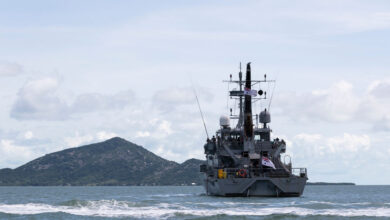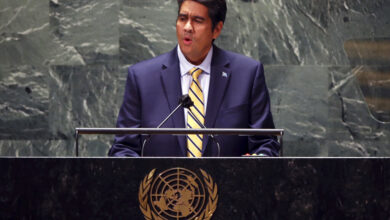PRC-backed projects raise suspicion in Russia’s Far East

FORUM Staff
Lingering anti-Kremlin protests and concerns over the People’s Republic of China’s (PRC’s) intentions in the border region are turning a spotlight on Russia’s sparsely populated but resource-rich Far East.
Dozens of demonstrators were forcibly arrested in October 2020 in Khabarovsk, a Russian city more than 6,100 kilometers east of Moscow and just 30 kilometers from the PRC, according to media reports. They were protesting a local politician’s detention several months earlier on charges related to a series of years-old murders.
Sergei Furgal, who denies the charges, was elected Khabarovsk’s governor in 2018, the BBC reported. His opponent was a member of President Vladimir Putin’s United Russia party.
Furgal’s arrest was the catalyst for more than 100 consecutive days of marches and rallies by thousands of people, pictured, eventually becoming “a focus point for frustrations in the Far East,” according to an October 29, 2020, article in the online magazine The Diplomat. Protesters have turned their ire toward Putin and the control that the far-flung Kremlin exerts over their homeland.
In September 2020, Russian defense officials announced that they would reinforce the military’s presence in the Far East, Reuters reported. The officials cited heightened tension caused by the activities of unspecified powers from outside the region.
Meanwhile, increasing investment by Beijing-backed companies — some of it supported by concessions from the Kremlin — is raising suspicion in Russia’s easternmost provinces.
In 2019, Russian authorities suspended a Chinese-owned company’s construction of a water-bottling plant along the shore of Lake Baikal in Siberia. Residents opposed the project as an environmental threat. Baikal is the planet’s largest freshwater lake by volume, containing 20% of all unfrozen freshwater reserves, and is a United Nations World Heritage Site.
Plans called for the plant to export almost 200 million liters of water annually to the PRC. The project further stirred fears of PRC land grabs and annexation in Siberia, where Chinese firms have leased vast tracts for logging and farming and spent heavily on commercial and tourism development, the South China Morning Post newspaper reported in March 2019.
The region has long been a source of dispute between the two nations. In 1860, after its defeat in the Second Opium War, China’s ruling dynasty ceded territory there to the Russian empire. A century later, troops from communist China and the Soviet Union clashed along the border north of the Russian port city of Vladivostok.
Today, an estimated 8 million people live in Russia’s expansive Far East, which is sparsely populated but abundant in natural resources ranging from oil and coal to fish and gold. In comparison, about 90 million Chinese live in three provinces bordering the region, according to the South China Morning Post.
Observers have dubbed this population imbalance a “geopolitical time bomb.”
“Many Russians believe that officials secretly want to sell off Siberia and the Far East to the Chinese, and that programs to develop these subsidized and peripheral regions are nothing but pre-sale preparations,” Ivan Zuenko, a research fellow at the Center for Asia Pacific Studies of the Russian Academy of Sciences Far Eastern Branch, wrote in a March 2020 commentary for the Carnegie Moscow Center.




